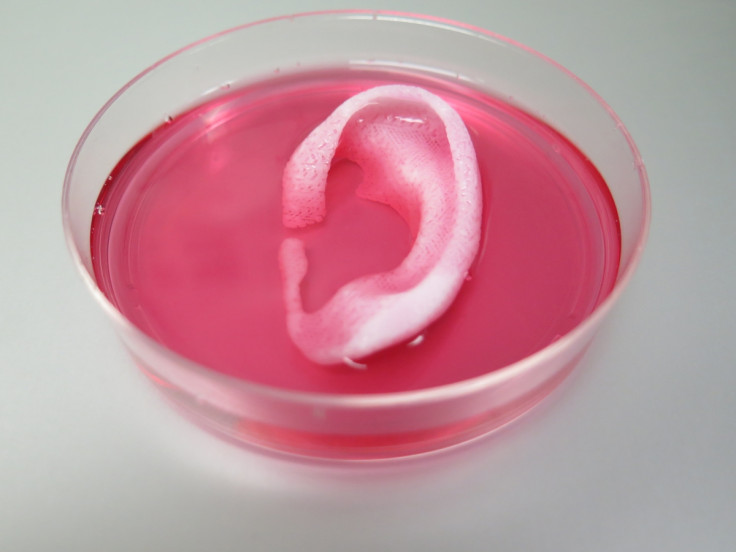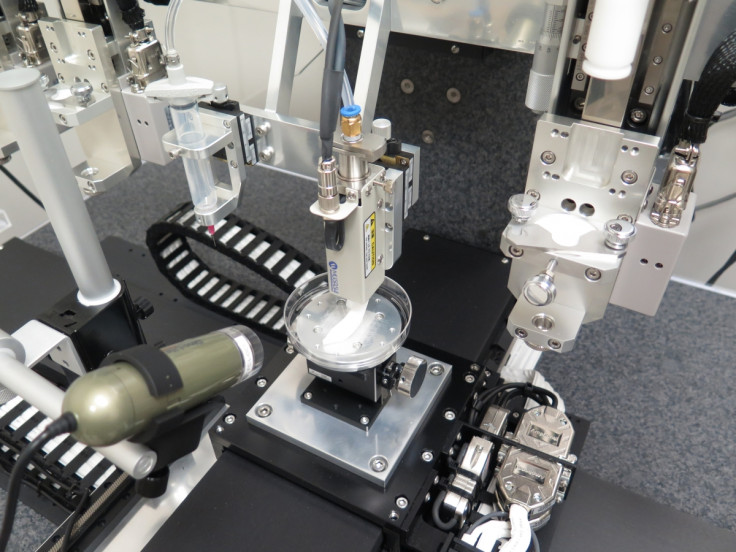3D Bioprinter creates human ear, bone and muscle - paving way for bespoke implants in future

A bioprinter that can create human-scale muscle, bone and cartilage has been developed by scientists, raising the hope it could one day be used for transplants, replacing injured and diseased tissue in patients. A team of scientists printed ear, bone and muscle structures, and when these were implanted into animals, they matured into functional tissue and developed a system of blood vessels.
Publishing their findings in the journal Nature Biotechnology, researchers from the Wake Forest School of Medicine were looking to address the issue of structural stability in 3D-printed tissues. Normally, these machines print cells in layered patterns, but they are often too unstable or fragile to be successfully implanted. Another issue is the lack of blood vessels, which means their size is constrained so they are too small to make human tissues and organs.
Their Integrated Tissue and Organ Printing System (ITOP) solves these problems by using bio-degradable plastic-like materials to form the tissue shape and water-based gels containing the cells. They optimised the water-based gel that holds the cells to promote cell health and growth while printing a lattice of micro-channels through the structures. This allowed nutrients and oxygen to diffuse into the structures and keep them alive while the blood vessel system develops.

ITOP was used to print human-sized ears that were then implanted under the skin of mice. Two months later, the shape had been maintained and blood vessels had formed. Printed muscle was implanted into rats and after two weeks, researchers found the tissue was strong enough to maintain its structure and induce nerve formation.
They also created jaw bone fragments using human stem cells. These fragments were the same size and shape required for facial reconstructions. When implanted into rats, the structures formed vascularised bone tissue.
Anthony Atala, senior author on the study, said: "Our results indicate that the bio-ink combination we used, combined with the micro-channels, provides the right environment to keep the cells alive and to support cell and tissue growth."
While the team was able to customise the shape of the tissue to suit individual needs, implantations into humans is still some way off. They will have to refine the technique so the tissues created include the use of human cells. The team also said further research will be needed to evaluate host immune response, as well as longer-term studies to understand the regeneration of bioprinted tissues. Nevertheless, they are hopeful the research can be developed further to create "clinically useful tissues and organs".
The research received funding from the Armed Forces Institute of Regenerative Medicine, a federally funded organisation that looks to apply regenerative medicine to those injured on the battlefield. In the future, the scientists hope to implant tissue into human patients.
Atala said: "This novel tissue and organ printer is an important advance in our quest to make replacement tissue for patients. It can fabricate stable, human-scale tissue of any shape. With further development, this technology could potentially be used to print living tissue and organ structures for surgical implantation."
© Copyright IBTimes 2025. All rights reserved.






















